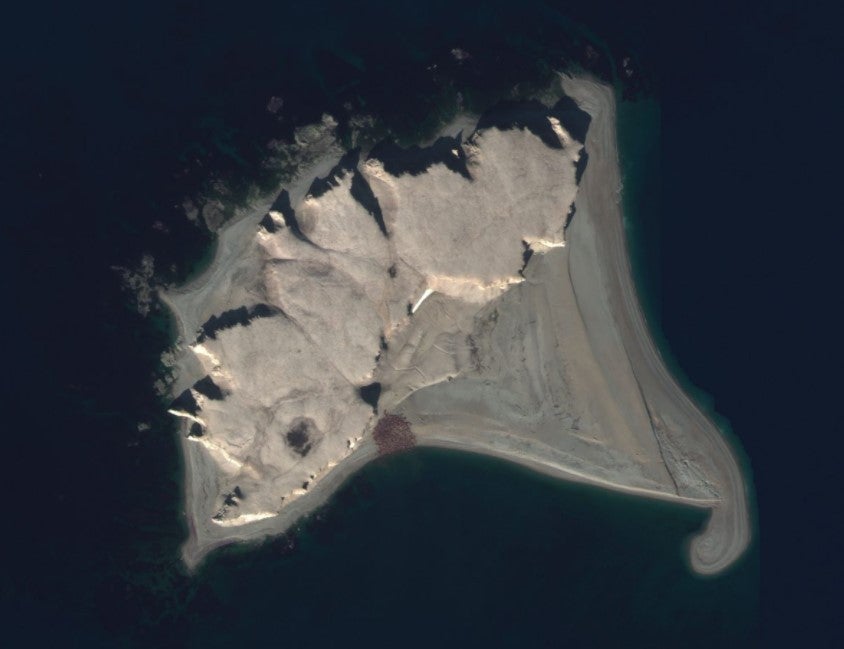Thousands of volunteers wanted to help spot walrus from space
The walrus’ Arctic home is warming almost three times faster than the rest of the world
Your support helps us to tell the story
From reproductive rights to climate change to Big Tech, The Independent is on the ground when the story is developing. Whether it's investigating the financials of Elon Musk's pro-Trump PAC or producing our latest documentary, 'The A Word', which shines a light on the American women fighting for reproductive rights, we know how important it is to parse out the facts from the messaging.
At such a critical moment in US history, we need reporters on the ground. Your donation allows us to keep sending journalists to speak to both sides of the story.
The Independent is trusted by Americans across the entire political spectrum. And unlike many other quality news outlets, we choose not to lock Americans out of our reporting and analysis with paywalls. We believe quality journalism should be available to everyone, paid for by those who can afford it.
Your support makes all the difference.Volunteers are being asked to help count walrus from space so scientists can get a better idea of population figures.
The WWF and British Antarctic Survey (BAS) have launched the Walrus from Space research project to learn more about how they will be impacted by the climate crisis.
They are seeking the public’s help to search for walrus in thousands of satellite images taken from space, and hope half a million people worldwide will join the census of Atlantic walrus and walrus from the Laptev Sea.
The organisations say the giant animal’s Arctic home is warming almost three times faster than the rest of the world and roughly 13 per cent of summer sea ice is disappearing per decade.
Walrus from Space uses satellites to capture thousands of high-resolution images of walrus congregated on more than 25,000km2 of Arctic coastline – an area larger than Wales.
From the comfort of their own homes, aspiring conservationists around the world can study the satellite pictures online, spot areas where the animals haul out onto land, and then count them.
The data collected in this census of Atlantic and Laptev walrus will give scientists a clearer picture of how each population is doing – without disturbing the animals. The data will also help inform management decisions aimed at conservation efforts for the species.
Hannah Cubaynes, wildlife from space research associate at British Antarctic Survey, said: “Assessing walrus populations by traditional methods is very difficult as they live in extremely remote areas, spend much of their time on the sea ice and move around a lot.


“Satellite images can solve this problem as they can survey huge tracts of coastline to assess where walrus are and help us count the ones that we find.
“However, doing that for all the Atlantic and Laptev walrus will take huge amounts of imagery, much too much for a single scientist or small team, so we need help from thousands of citizen scientists to help us learn more about this iconic animal.”
Walrus use sea ice for resting and to give birth to their young.
As sea ice diminishes, more walrus are forced to seek refuge on land, congregating for the chance to rest. Overcrowded beaches can have fatal consequences; walrus are easily frightened, and when spooked they stampede towards the water, trampling one another in their panic.
Resting on land (as opposed to sea ice) may also force walrus to swim further and expend more energy to reach their food – food which in turn is being negatively impacted by the warming and acidification of the ocean.
Walrus can also be disturbed by shipping traffic and industrial development as the loss of sea ice makes the Arctic more accessible. Walrus are almost certainly going to be impacted by the climate crisis, which could result in significant population declines.
Rod Downie, chief polar adviser at WWF, added: “Walrus are an iconic species of great cultural significance to the people of the Arctic, but climate change is melting their icy home. It’s easy to feel powerless in the face of the climate and nature emergency, but this project enables individuals to take action to understand a species threatened by the climate crisis and to help to safeguard their future.
“What happens in the Arctic doesn’t stay there; the climate crisis is a global problem, bigger than any person, species or region. Ahead of hosting this year’s global climate summit, the UK must raise its ambition and keep all of its climate promises – for the sake of the walrus, and the world.”
Join our commenting forum
Join thought-provoking conversations, follow other Independent readers and see their replies
0Comments